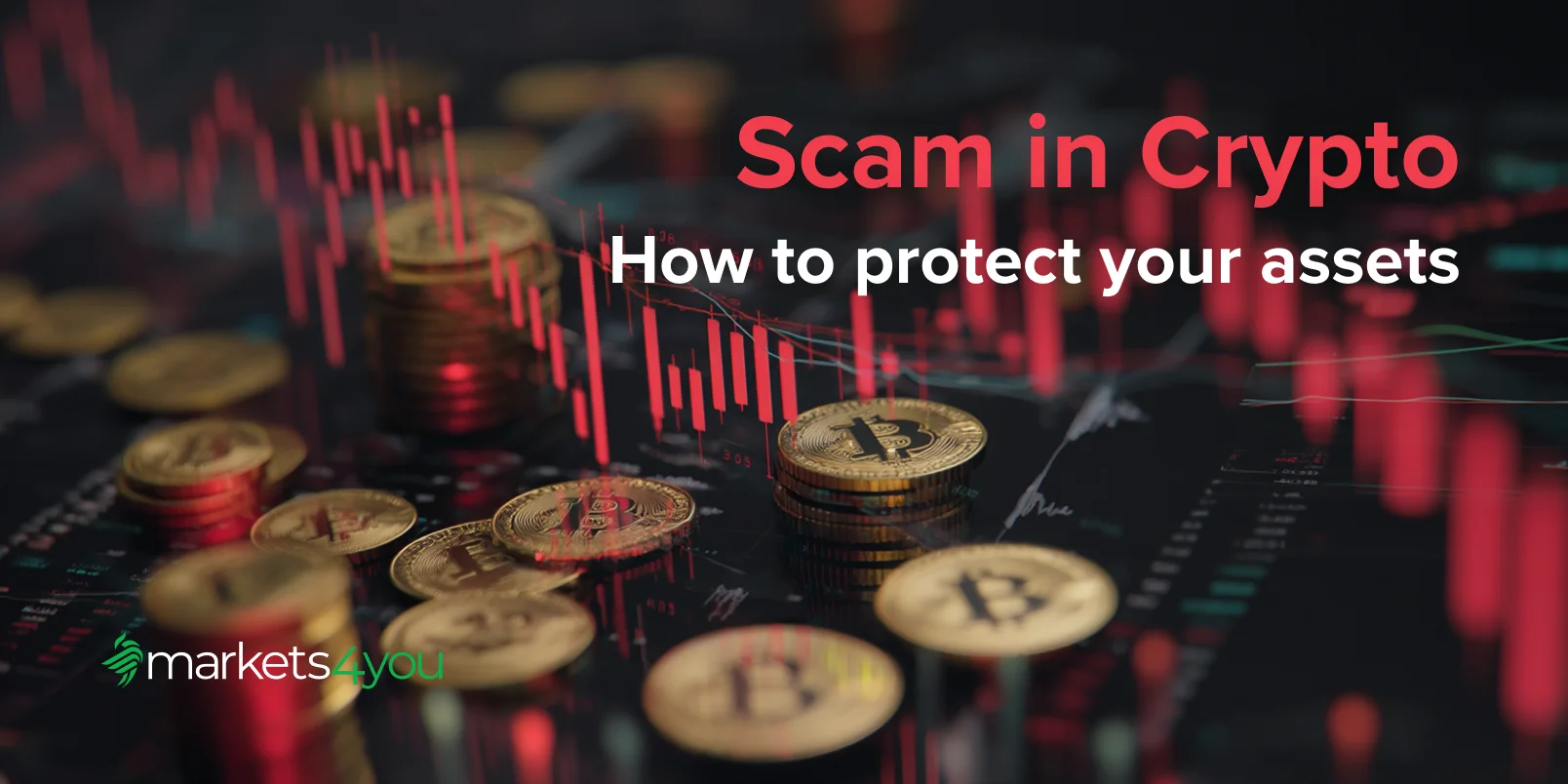How to Protect Your Crypto Assets from Hacks and Scams in 2025

The crypto world is a digital Wild West. Exciting, valuable, and sometimes dangerous. With over $4 billion in cryptocurrency stolen in 2024 alone, securing your digital assets has never been more critical. The threats are evolving, but so are the protection methods.
Let’s cut through the complexity and get straight to what matters: keeping your crypto safe in an increasingly hostile digital environment.
Understanding Crypto Vulnerabilities
The first step to protecting your assets? Know what you’re up against.
Cryptocurrency’s decentralized nature – the very thing that makes it revolutionary – also creates unique security challenges. Unlike traditional banking with its built-in safeguards, crypto puts security squarely in your hands.
That’s both empowering and terrifying.
Exchange Vulnerabilities: A Major Risk
Crypto exchanges are prime targets for hackers. Why? Because that’s where the money is.
When you store cryptocurrency on an exchange, you’re essentially trusting a third party with your digital wealth. While major platforms invest heavily in secure crypto storage, no system is impenetrable.
Mt. Gox, Bitfinex, Coincheck – the history of crypto is littered with exchange hacks that left investors empty-handed. Even today, exchange security varies dramatically, making your choice of trading platform a critical decision in your crypto protection strategy.
Bridge Exploits: Understanding the Threat
Cross-chain bridges have become a hacker’s paradise. These protocols facilitate transfers between different blockchains – and represent a massive security blind spot.
In 2022 alone, bridge exploits accounted for over $2 billion in stolen funds. The complex code that allows these bridges to function also creates vulnerabilities that skilled attackers can exploit.
Every time you move assets across chains, you’re taking a calculated risk. Understanding this vulnerability is essential for anyone serious about crypto investment safety.
Wallet Insecurities: Hot vs. Cold Wallets
Your wallet choice could be the difference between security and catastrophe.
Hot wallets – those connected to the internet – offer convenience at the cost of increased vulnerability. They’re like keeping cash in your pocket: accessible but risky.
Cold wallets, by contrast, store your assets offline. They’re the digital equivalent of a bank vault. Impervious to online attacks but potentially vulnerable to physical theft or damage.
This fundamental security tradeoff – convenience versus safety – is at the heart of wallet security decisions.
Common Tactics Used by Hackers
Hackers aren’t mysterious wizards. They’re methodical professionals using well-established techniques.
Understanding these tactics is your first line of defense against crypto hacking attempts. Let’s explore how these digital predators operate.
Phishing Attacks in Crypto
The oldest trick in the book remains surprisingly effective. Phishing attacks target you, not your technology.
A seemingly legitimate email from your exchange. A clone of a popular wallet website. A direct message offering an exclusive investment opportunity. These are all common entry points for phishing in crypto.
Once you click that link or enter your credentials, the damage is done. Your private keys – and with them, your assets – are compromised.
Remember: no legitimate crypto platform will ever ask for your seed phrase or private keys. Ever.
Exploiting Software and Blockchain Vulnerabilities
Code isn’t perfect. Neither are the people who write it.
Blockchain technology may be revolutionary, but it’s still software – written by humans and vulnerable to human error. Smart contract exploits have resulted in hundreds of millions in stolen funds when attackers find and leverage coding mistakes.
Even the most secure cryptocurrency platforms can have overlooked vulnerabilities. Regular updates and security audits are essential components of platform-level digital asset safety.
The Dangers of Private Key Theft
Your private key is the master key to your crypto kingdom. Lose it, and you’ve lost everything.
This string of characters gives complete control over your assets. It doesn’t matter if you have two-factor authentication on your exchange account or the most sophisticated wallet software – if someone obtains your private key, your protection is instantly worthless.
Keeping this crucial piece of information secure is perhaps the single most important aspect of crypto theft prevention.
How to Protect Your Cryptocurrency
Enough about the threats. Let’s talk solutions.
The good news? With the right approach, you can dramatically reduce your risk. Here’s how to create a robust defense system for your digital assets.
Choosing a Reputable Exchange
Not all exchanges are created equal. Your first line of defense is selecting a platform that prioritizes exchange security.
Look for platforms with:
- A proven track record of security
- Multi-factor authentication
- Cold storage for the majority of assets
- Regular security audits
- Insurance against hacks
At Markets4you, we implement industry-leading security measures to ensure safe crypto trading for all our users. But even with trusted platforms, you shouldn’t keep all your assets on an exchange long-term.
The Importance of Using a Hardware Wallet
Hardware wallets are the gold standard of crypto wallet safety.
These physical devices store your private keys offline, making them virtually immune to remote attacks. Even if malware infects your computer, your crypto remains secure because the keys never leave the device.
Think of a hardware wallet as your personal crypto vault – a small investment that could save your entire portfolio.
Leading options like Ledger, Trezor, and KeepKey offer varying features, but all provide the fundamental security benefit: keeping your private keys completely isolated from the internet.
Separating Personal and Work Devices for Crypto
Cross-contamination is a major but overlooked risk in online crypto security.
The device you use for daily browsing, email, and social media is constantly exposed to potential threats. Using this same device for crypto transactions significantly increases your risk profile.
Consider maintaining a dedicated device for cryptocurrency activities. This “clean” system – used only for crypto transactions and nothing else – creates an additional security layer that can prevent numerous attack vectors.
It’s an extra step, yes. But compared to losing your assets, it’s a small inconvenience.
Beyond the Basics: Advanced Crypto Protection
Understanding the fundamentals is just the beginning. True security comes from implementing a comprehensive strategy.
Strong crypto security isn’t about a single solution. It’s about defense in depth – multiple layers of protection working together.
The Power of Multi-Factor Authentication
Passwords alone are no longer enough. Multi-factor authentication adds a crucial second (or third) verification layer.
When configured properly, MFA ensures that even if your password is compromised, attackers still can’t access your accounts. Physical security keys provide the strongest protection, followed by authenticator apps.
Text message verification is better than nothing, but vulnerable to SIM swapping attacks. Whatever method you choose, enabling multi-factor authentication is non-negotiable for anyone serious about avoiding crypto scams.
Secure Blockchain Transactions: Verify, Then Trust
The crypto mantra of “Don’t trust, verify” applies to every transaction.
Before confirming any transaction:
- Double-check addresses (consider sending a small test amount first)
- Verify the platform you’re using is legitimate
- Be wary of “urgent” investment opportunities
- Confirm gas fees and transaction details
A moment of verification can prevent a lifetime of regret. The blockchain’s irreversibility means mistakes are permanent — there’s no fraud department to call.
Staying Alert to Crypto Airdrop Safety
“Free” crypto is rarely truly free. Airdrop scams exploit human nature – our attraction to something for nothing.
Legitimate airdrops exist, but they’re surrounded by predators waiting to exploit your optimism. Never connect your primary wallet to claim an airdrop. If verification requires your seed phrase or private keys, it’s a scam – no exceptions.
Consider using a separate wallet with minimal funds specifically for exploring airdrops and new projects to isolate potential risks.
The Human Element in Cryptocurrency Security
All the technology in the world can’t protect you from the most vulnerable security component: human behavior.
Emotion-driven decisions, carelessness, and overconfidence account for more losses than sophisticated hacks. Maintaining a security mindset is your ultimate protection.
Creating a Crypto Security Routine
Security isn’t a one-time setup. It’s a continuous practice.
Develop habits that reinforce your crypto protection:
- Regularly update all wallet software
- Periodically review exchange security settings
- Stay informed about new threats
- Practice secure crypto trading procedures consistently
These small actions, performed regularly, create a robust security foundation.
Learning from Others’ Mistakes
The crypto landscape is filled with cautionary tales. Let them be lessons, not personal experiences.
Study major hacks and scams. Understand what went wrong and how it could have been prevented. The patterns repeat – new variations on old schemes that prey on the same human vulnerabilities.
By learning from others’ misfortunes, you can avoid making similar costly mistakes.
Your Next Steps for Bulletproof Crypto Security
Knowledge is only valuable when applied. Here’s what to do now:
- Audit your current security setup
- Implement the measures discussed
- Stay vigilant and informed
The crypto world offers unprecedented financial opportunities. With the right security approach, you can explore these possibilities while keeping your assets protected.
At Markets4you, we’re committed to helping you navigate the crypto landscape safely. Our education center provides ongoing resources to help you stay ahead of emerging threats.
Remember: in cryptocurrency, you are your own bank. It’s a responsibility that demands respect – and preparation.
Your digital assets deserve the strongest protection you can provide. Start implementing these measures today.

